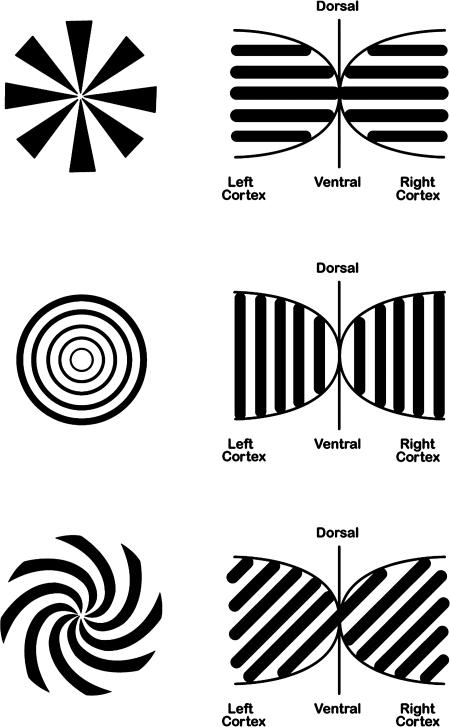Fig. 1.
Some visual stimulus geometries on retina (Left) that map to cortex (Right) as parallel stripes of various orientations (14, 15). Conversely, if a parallel stripe neural activity pattern is produced on cortex (e.g., by flickering an empty field), its orientation determines the form of the induced hallucination. The patterns shown in Left can also be used to bias flicker-induced hallucinations by inducing simultaneous contrast effects (between orthogonal patterns) in adjacent flickering fields (e.g., Fig. 3).

